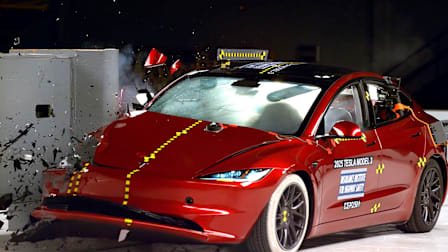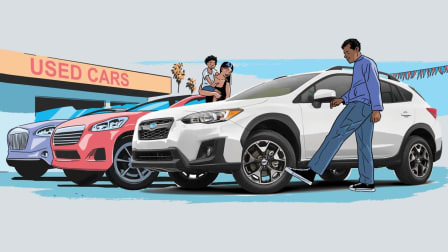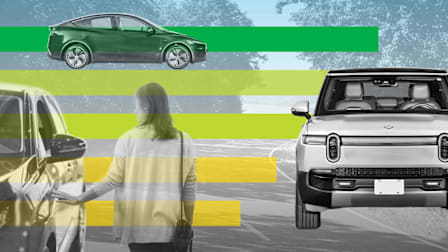Pickup Truck Crash Tests Show Need for Rear-Seat Safety Improvements
Five popular compact pickups showed risks of head, neck, and chest injuries for rear passengers
Not a single compact pickup truck tested by the Insurance Institute for Highway Safety (IIHS) received a top score in a new crash test designed to see how well vehicles protect rear-seat passengers in a collision.
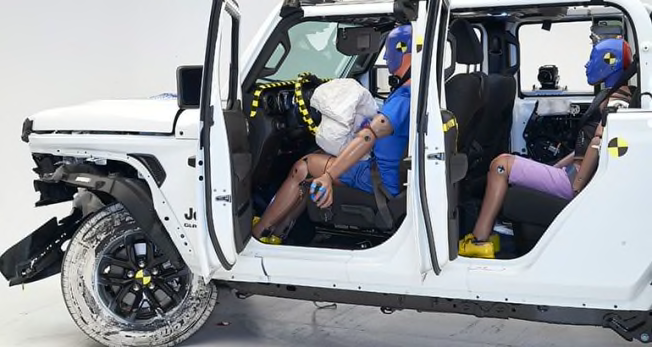
Photo: IIHS Photo: IIHS
The updated moderate overlap test is the first IIHS crash test to feature a dummy in the second row, and it has been challenging for small cars, midsized SUVs, and small SUVs, with only a handful of vehicles earning a top rating of Good.
The low scores were largely due to a high risk of head and chest injuries for rear passengers. In the Colorado, Frontier, Ranger, and Tacoma, the rear-seat dummy’s head came too close to the front seatback, and dummy measurements indicated a risk of head, neck, and chest injuries. In the Ranger, the lap belt slid up onto the dummy’s abdomen, increasing the risk of internal injuries.
“All these things tell us that the rear seat belts need improvement,” the IIHS president, David Harkey, said in a statement. The Gladiator lacks rear side curtain airbags, which increases the risk of a passenger being injured by hitting the interior of the vehicle. In addition, the tests indicated an elevated risk of leg and foot injuries for front occupants of the Gladiator and Tacoma.
The rear-seat dummy used in the moderate overlap test represents a small woman or a 12-year-old child because it more closely matches the average size of a rear-seat passenger than other dummies available.
These results may seem discouraging, says Emily Thomas, CR’s manager for auto safety, but car buyers should expect newer models to perform better as automakers redesign their vehicles to excel in new crash tests. Considering how soon three of these trucks are undergoing major design changes, those improvements could even come within the next model year.
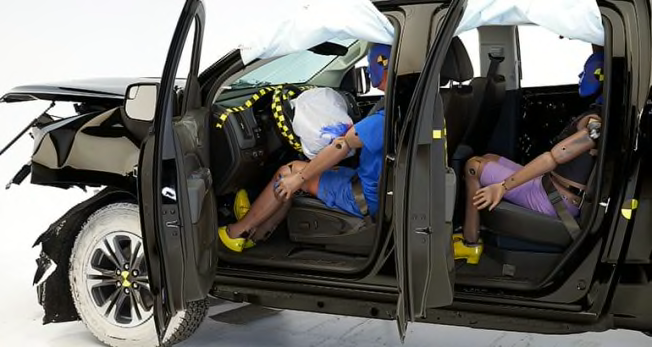
Photo: IIHS Photo: IIHS
“More rigorous tests like these often lead automakers to make changes that improve safety for vehicle occupants,” she says.
These results once again confirm that safety advances for drivers and front passengers haven’t necessarily translated into better protection for rear occupants. In fact, the IIHS says that in newer vehicles, occupants wearing rear seat belts have a higher risk of fatal injury in a crash than those in front, not because the rear seat has become less safe but because front-seat safety has improved so much. CR also evaluates rear-seat safety features as part of our ratings program. These include child car seat and booster seat fit, crash-protection features intended for rear occupants of all ages and sizes, and technology designed to encourage rear seat belt use.
“It’s well past time for automakers to strengthen their focus on rear-seat safety,” Thomas says. “IIHS new crash tests and CR’s rear-seat evaluations can not only help consumers choose a safer car, but they’ll encourage automakers to build safer vehicles for all occupants in the first place.”
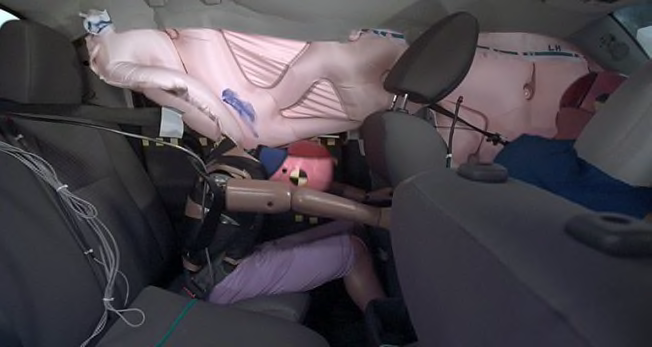
Photo: IIHS Photo: IIHS

















